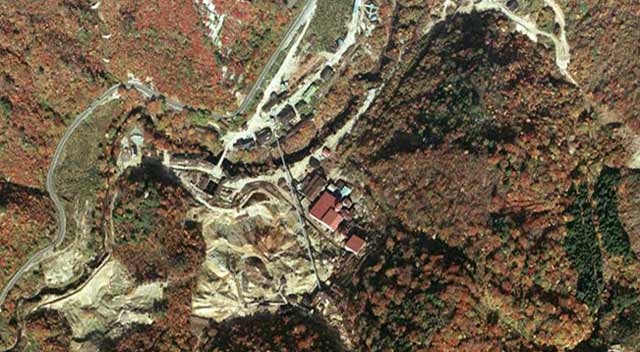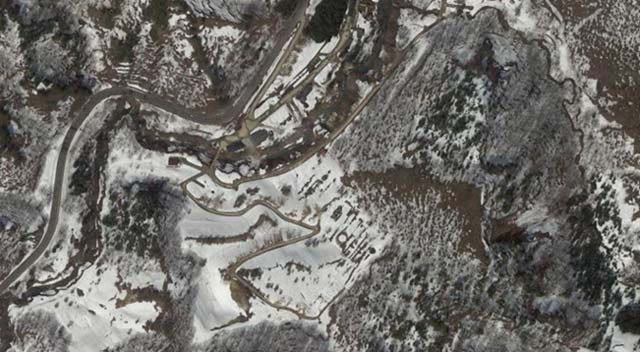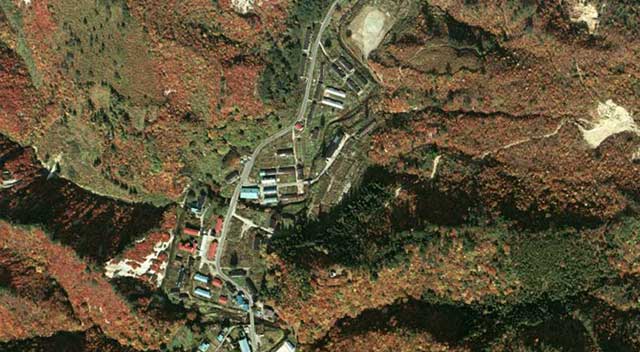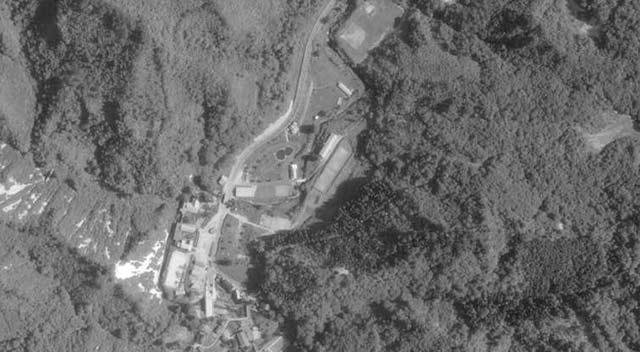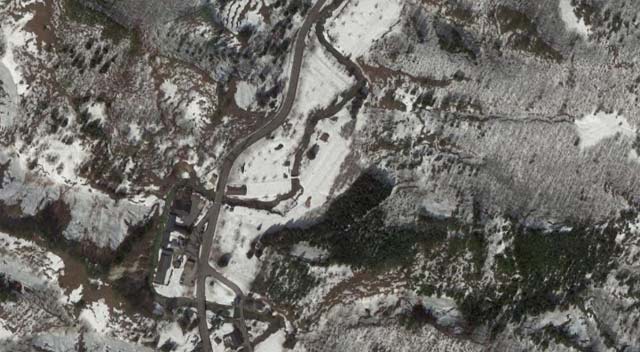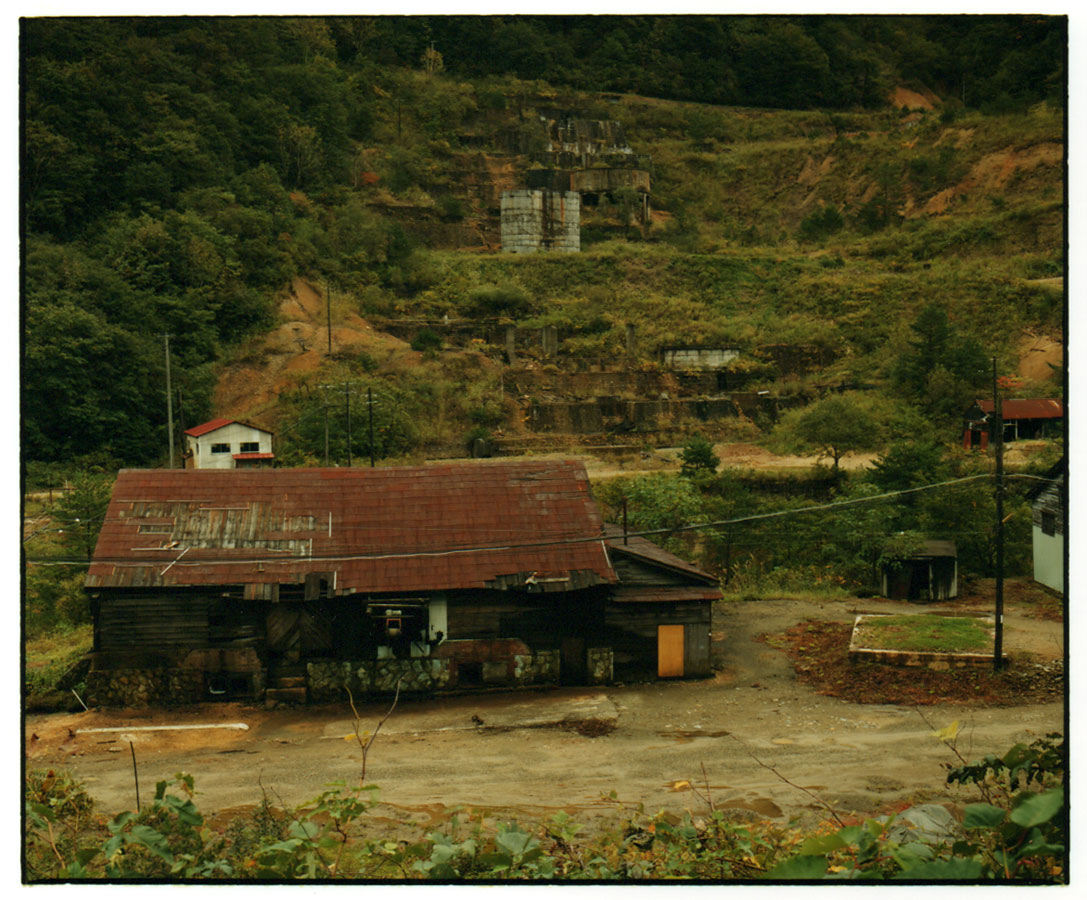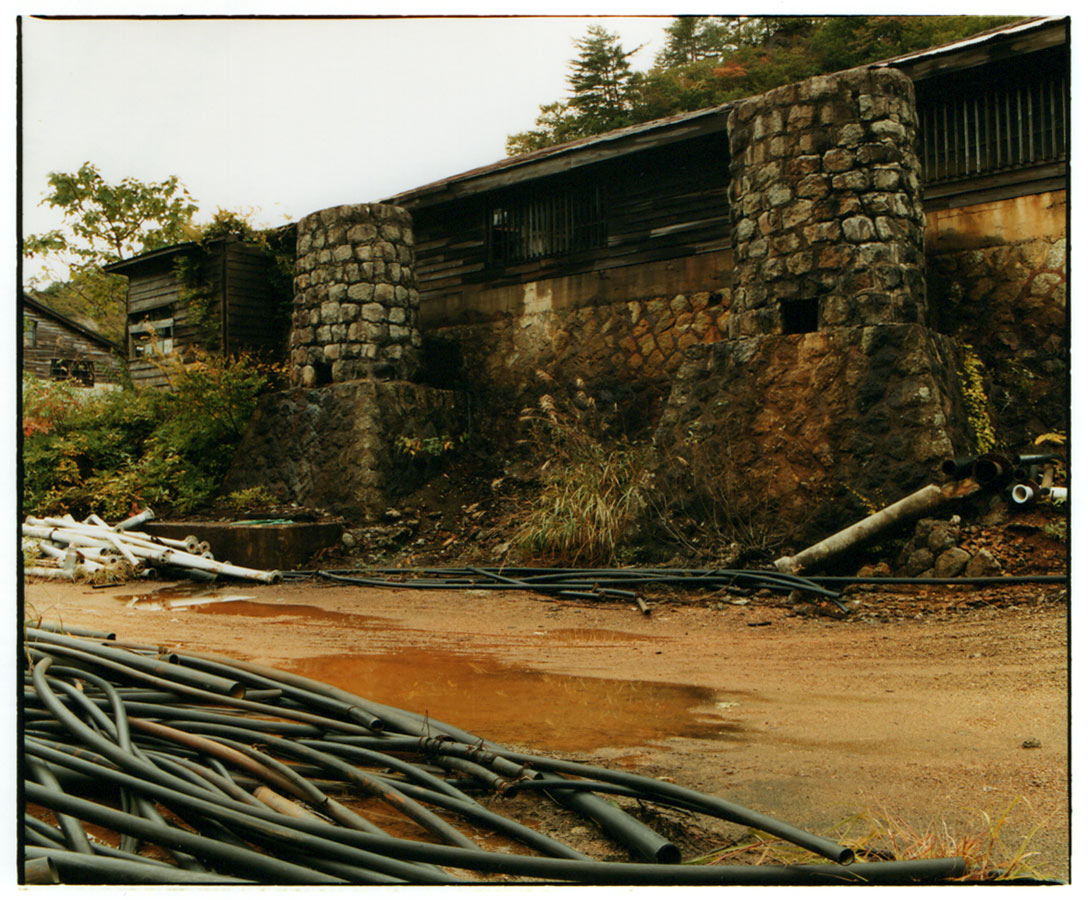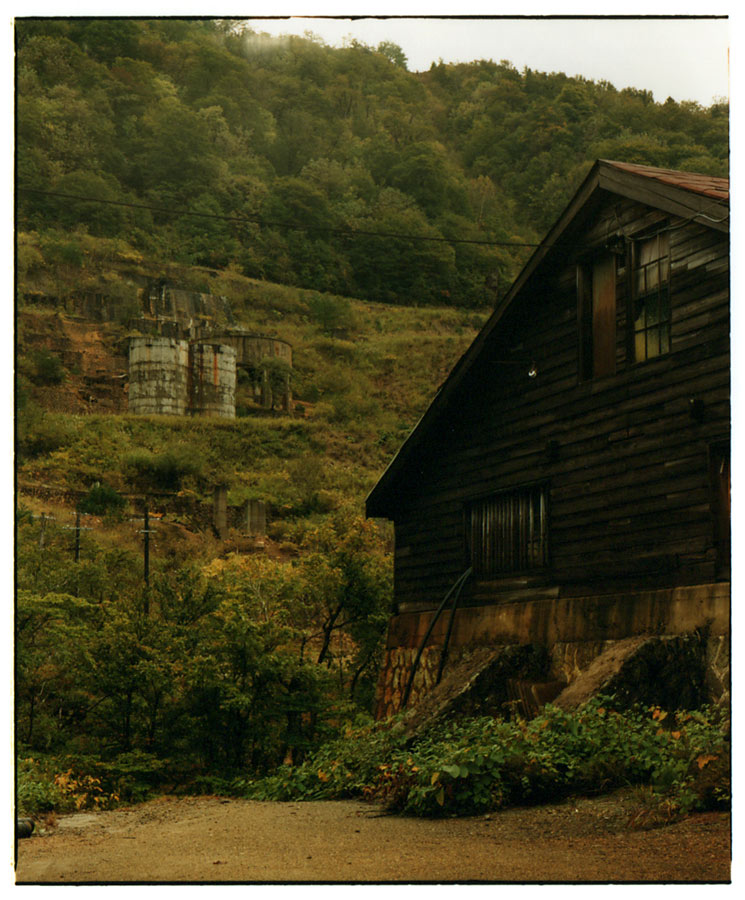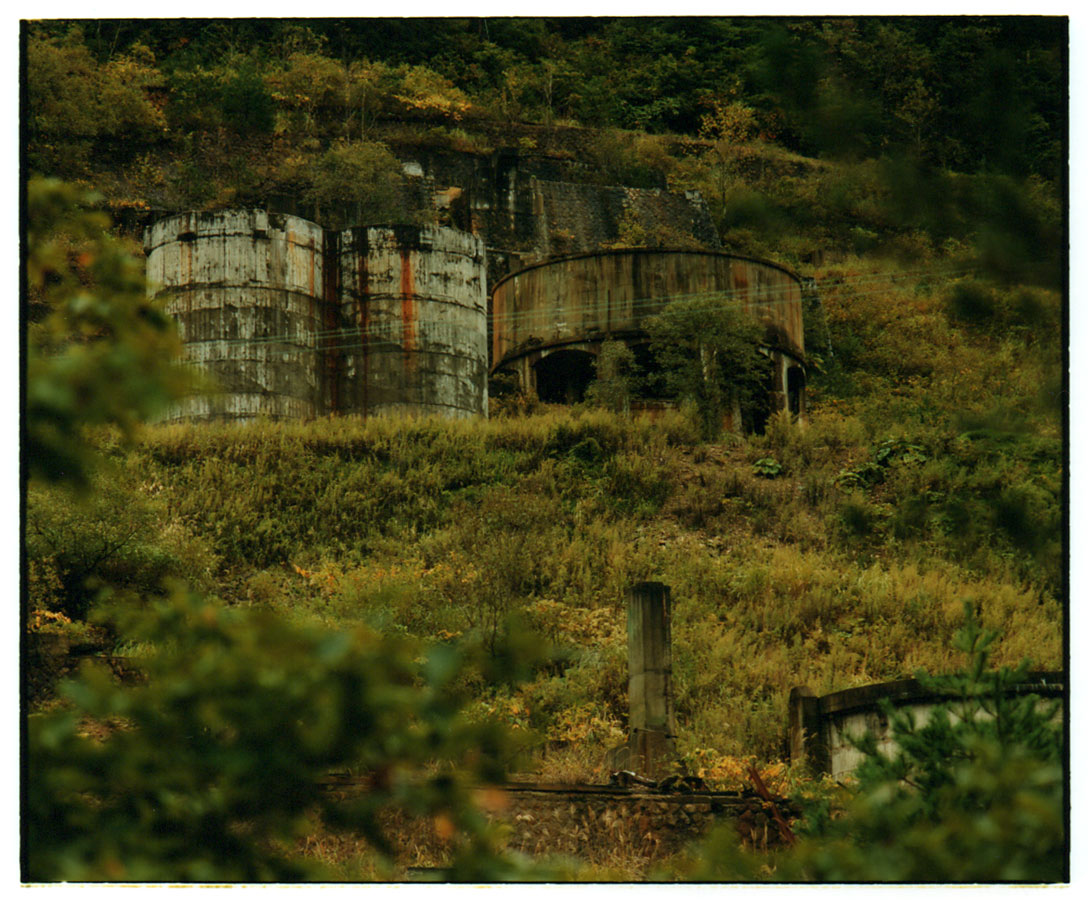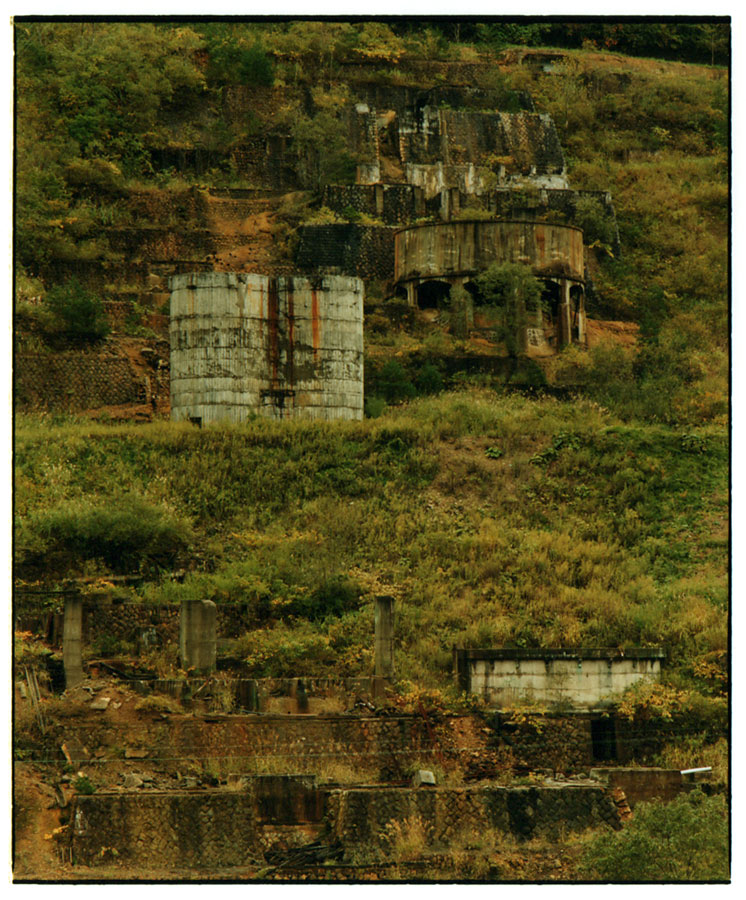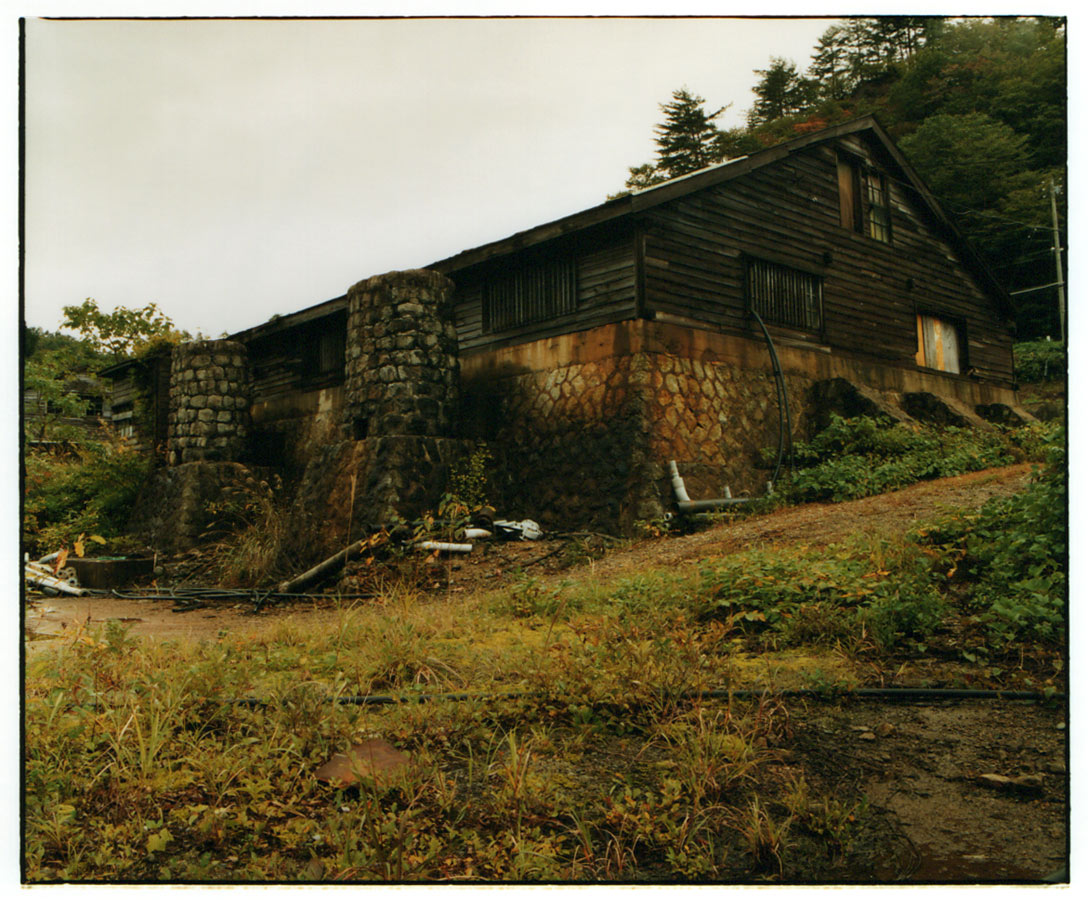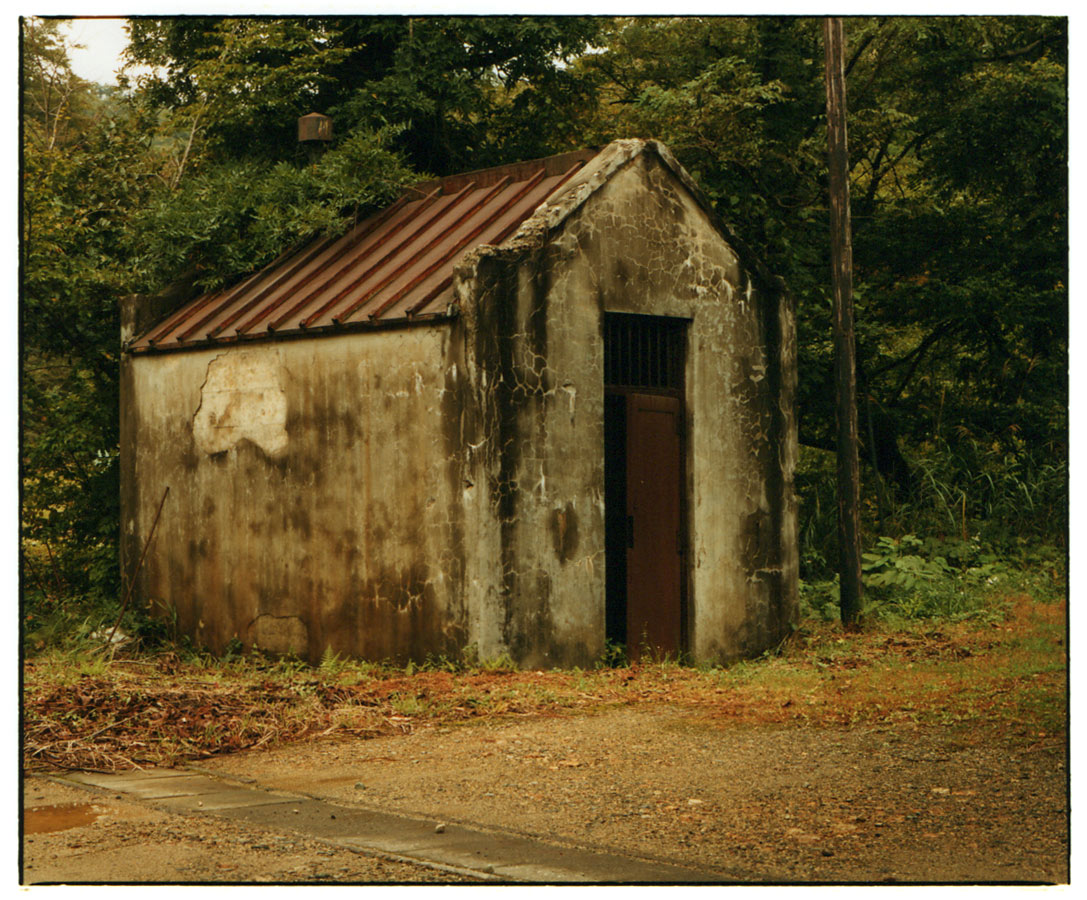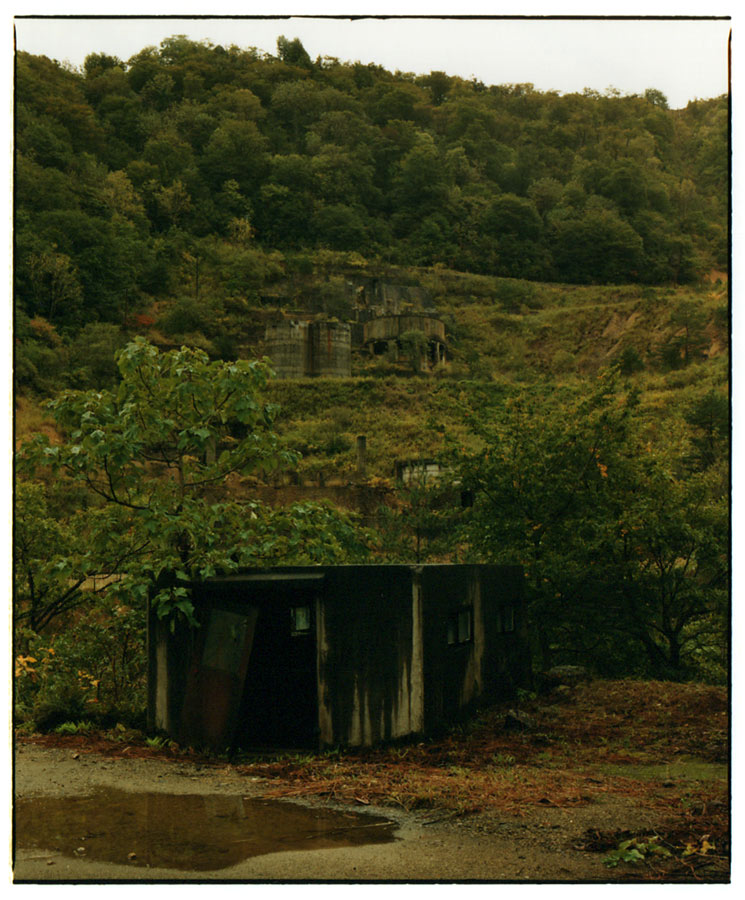土畑鉱山跡
秋田との県境付近を流れる和賀川支流 小鬼ヶ瀬川の沿岸に位置し、大正期から銅鉱を産出して栄えました。 1900 年(明治 33 年)に地元村民 照井岩次郎によって畑平に露頭が発見され、同年に仙北郡の福田久右衛門が金銀鉱の試掘を出願します。 翌年から行われた搗鉱製錬は収益性に乏しく、操業は短期間に留まりました。 その後、鉱業権は 1903 年(明治 36 年)に東京の実業家 濱本義顕らの手に移り、3 年後に湯川金山会社が設立されます。 しかし、青化法を併せた製錬操業は数年の内に廃止され、大切坑の開削とともに行われた探鉱は不振に終わりました。 その後、大戦景気を受けて銅価が高騰する中、1915 年(大正 4 年)に地元村民 高橋謙一郎が旧坑に銅鉱を発見し、土畑鉱山と改称して売鉱を行います。 翌年に田中鉱業(後の糸平興産)が権利の譲渡を受けて開発に着手し、土畑は銅山として発展することとなりました。 索道の架設や削岩機の導入に加え、1924 年(大正 13 年)に国内初となる全泥浮遊選鉱場が完成し、生産は大幅に増加します。 1929 年(昭和 4 年)の生産量は粗鉱 132,786 t、銅精鉱 17,407 t に上り、鉱夫数は 558 名を数えて最盛期を迎えました。 さらに、1933 年(昭和 8 年)から上野々鉱床が開発され、その後 5 年間の粗鉱量は年間 20 万 t を超えて推移しました。 終戦後に低迷した生産は、1950 年(昭和 25 年)の翁沢鉱山の買収をはじめ、採鉱法の見直しや運搬設備の増強を経て回復し、昭和中期に再興を果たします。 隣接する湯川は温泉が湧出する鉱山町として栄え、社宅や浴場、講堂、体育館、購買所、小学校が並び、従業員とその家族を含む 3,000 人ほどが生活を営みました。 資源の枯渇を受けて 1976 年(昭和 51 年)に閉山を迎えますが、その後も坑廃水処理とともに沈殿銅の採取が継続されます。 山腹には当時の選鉱場跡が今も残ります。
1976 年閉山
Tsuchihata Mine
The mine is situated on the coast of the Konigase River, a tributary of the Waga River, on the western edge of the prefecture, and it produced copper ore from the early 20th century. The discovery of an outcrop was made by Iwajiro Terui, a local villager, at Hatabira in 1900. The same year, Kyuemon Fukuda, from Senboku County, applied for an exploration permit for gold and silver ores and began gold extraction with the amalgamation process in the following year. However, the operations were unprofitable, and the mine was abandoned later. Subsequently, Yoshiaki Hamamoto, a businessman from Tokyo, and others purchased the rights in 1903 and established Yugawa Gold Mine Company three years later. Despite adopting cyanidation process in addition to conventional methods, the results were poor, and the company continued with exploration and excavation of Okiri Adit. In the early 20th century, the First World War caused a rise in demand for copper. Under such circumstances, Ken-ichiro Takahashi, a local villager, discovered copper ore in old workings in 1915 and began mining operations. The mine was renamed Tsuchihata Mine, and mined ore was sold to others. The following year, Tanaka Mining Co., Ltd., later Itohei Corporation, acquired the mine and commenced mine development including the construction of aerial tramways and the use of rock drills. The construction of a new beneficiation plant with the all-sliming process in 1924, which became the first in the country, especially led to an increase in production. In the peak year of 1929, the mine produced 132,786 tonnes of crude ore and 17,407 tonnes of copper concentrate, and the number of miners totaled 558. Furthermore, due to the development of new ore deposits at Uenono in 1933, the annual production of crude ore exceeded 200,000 tonnes for the following five years. After the war, declining production gradually recovered due to the purchase of Okinasawa Mine in 1950. Moreover, the introduction of new mining methods and the expansion of haulage equipment led to a revival of the mine's production from the late 1950s. A mining town built in Yugawa, where a hot spring emerges, had a population of approximately 3,000, comprising employees and their families. The town was equipped with numerous welfare facilities, including company houses, company bathhouses, a lecture hall, a gymnasium, a shop, and an elementary school. Although the mine was closed due to resource depletion in 1976, wastewater treatment and the recovery of cement copper have been continuing. The remains of the beneficiation plant still stand on the mountainside.
closure in 1976
岩手県和賀郡西和賀町
銅、金、銀、亜鉛、硫化鉄
Nishi-Waga Town, Waga County, Iwate
copper, gold, silver, zinc, iron sulfide
主要鉱床は名称の由来となる畑平と白土に上野々を加えた 3 鉱床からなり、銅鉱の採掘とともに沈殿銅の採取が行われました。 畑平の選鉱場と搬出拠点の横黒線(後の北上線)陸中川尻駅との間には全長 2,909 m の馬車軌道が敷設され、冬季輸送に備えて索道が並行して架設されます。 上野々から選鉱場への送鉱には全長 1,662 m の索道が用いられ、1966 年(昭和 41 年)にトラック輸送に切り替えられました。 これに伴い、畑平では麓から選鉱場上部にかけて長さ 250 m ほどの送鉱円筒ベルトコンベアが備えられます。 田中鉱業は土畑を操業する傍ら、1921 年(大正 10 年)に鷲之巣鉱山を譲り受け、後に鷲之巣事業所を開設します。 1939 年(昭和 14 年)に新設された鷲之巣選鉱場では風倉、赤倉、本仁王、甲子鉱床の鉱石が処理されました。
Tsuchihata Mine derives its name from its ore deposits, namely, Hatabira and Shirotsuchi. Additionally, the mine had several ore deposits such as Uenono and produced cement copper from wastewater as well as copper ore. The company constructed aerial tramways to operate during the snow season between the beneficiation plant at Hatabira and Rikuchu-Kawajiri Station on the Okoku Line, later the Kitakami Line, in parallel with a horse-drawn track spanning 2,909 meters in length. In addition, an aerial tramway with a length of 1,662 meters was constructed between Uenono and the beneficiation plant, transporting ore to the plant. In 1966, the mode of transportation was switched from the aerial tramway to trucks, and a pipe conveyor with a length of approximately 250 meters connected the base of Hatabira to the top of the plant. Tanaka Mining Co. purchased Washinosu Mine in 1921 and established Washinosu Mining Works later. Washinoshu Beneficiation Plant, built in 1939, processed ore mined at Kazakura, Akakura, Honniou, and Kacchi deposits.
畑平地区
Hatabira area
At the time of 1976
At the time of 1987
At the time of 2014
湯川地区
Yugawa area
At the time of 1976
At the time of 1987
At the time of 2014
